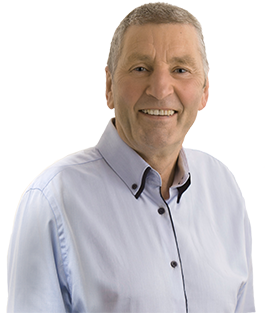What is muscle cramp in the calf muscles?
There are two muscles in the lower area of the back of the leg called ‘Gastrocnemius and Soleus more commonly called the calf muscles. There are two main muscles in your calf. When these internal muscles become overstretched or strained from over-exercise or sport, fibres can become torn resulting in pain and discomfort in this area.
This injury is quite common among runners and athletes. Long-term injury to these muscles can result in chronic and acute pain. It can also cause acute pain from persistent short-term over-stretching or over-pulling of these calf muscles.
This injury is quite common among runners and athletes. Long-term injury to these muscles can result in chronic and acute pain. It can also cause acute pain from persistent short-term over-stretching or over-pulling of these calf muscles.
Symptoms of pulled calf muscles
The symptoms related to pulled calf muscles can vary depending on the severity of the damage incurred and the level of pain experienced.
The feeling in the muscles can be:
- A feeling of intense to severe sharp pain in the calf muscles
- Signs of mild or severe bruising or swelling in the area of the calf muscles
- A feeling of ‘dragging’ or ‘pulling’ inside the lower half of the back of the leg
- The affected area may be red in colour
- You may have difficulty with any movement of the affected leg including standing or walking
- Your mobility may also be affected which can create a major problem with your normal everyday activities, sporting activities or exercising
- Over-stretched or torn tendons or ligaments in the calf muscles
- Strain, damage or injury from over-exertion, over-exercise or intense training
- Weight-lifting, fast cycling, swimming, walking or running without prior warm-up exercises
- Calf muscle cramps can occur quite regularly when turning or twisting in bed
Professional advice
It is important to seek immediate medical care and get a prompt and accurate diagnosis for any physical injury, pain, sprain, strain, cramp, rupture, tear or damage to determine the severity of the injury and receive proper treatment.
If you are involved in sporting activities or training exercises, it is advisable to seek advice from a professional sports medicine specialist or physical therapist so you can develop proper training exercises that can help reduce the risk of further injury or damage. Proper guidance and advice can provide you with the necessary instructions on preventing and reducing the risk of injuries.
If you are involved in sporting activities or training exercises, it is advisable to seek advice from a professional sports medicine specialist or physical therapist so you can develop proper training exercises that can help reduce the risk of further injury or damage. Proper guidance and advice can provide you with the necessary instructions on preventing and reducing the risk of injuries.
- Always start with slow and gentle ‘warm-up exercises’ prior to any physical work or sporting activity
- Applying an ice-pack or heated wheat-pack to the painful area for 10-15 minutes 2-3 times daily may help to reduce levels of inflammation pain and swelling
- Swimming or water aerobics can be a very helpful activity for your overall body
- Exercising in the pool may be beneficial if you cannot swim, as the buoyancy of the water reduces the weight on your joints. This can be beneficial for overall exercise or following any injury of any kind to the physical body
- You may find that a reduction in any strenuous activity may help to improve any pain or discomfort
- Maintain a healthy weight level. If you are carrying excess weight this in itself can put added stress on your joints and on all muscles including calf muscles
- Choose appropriate footwear for normal activities or when involved in a particular sport or exercise programme
- Maintain good physical health, strength and flexibility
- As in many cases of injury you may be advised to rest for a number of days or weeks to reduce the risk of further damage, inflammation or injury
- Following a restful period, you may be able to return to exercise, but avoid any activity likely to aggravate the pain or injury
- Applying bio energy flows around muscles can help reduce stress and pain
- Emotional stress or mental stress may in many cases cause the physical body to tense up and muscles to contract leading to additional physical stress on your overall body
- Find time to chill-out, meditate or take time out each day which you can call ‘ME TIME’. This is your time to ground yourself, be in the moment, to ‘tune-in’ to your own body with mindfulness and self-awareness
- Study bio energy techniques you can apply in our self-healing course
Self-help, self-care & self-healing programme
Having received a professional diagnosis and medical attention, you have the choice of applying bio energy healing techniques from our self-healing course which may help to accelerate and hasten the healing process and may also help as a preventative measure against future or further injuries, sprains, strains, cramps or physical discomfort.

Register today and start your self-healing journey straight away!


